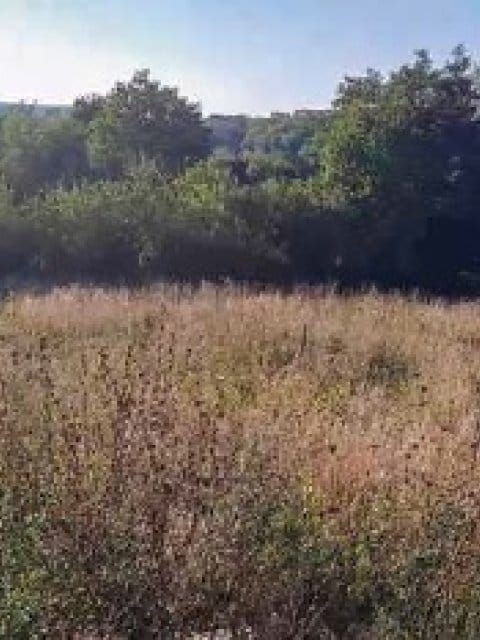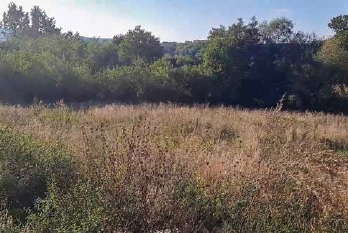
Residency of artist Andrei Nacu in Bucharest
Feed from C4R - Wednesday, November 15, 2023November 2023
At the end of the mapping of artistic initiatives in the countryside, realised by tranzit.ro in the frame of C4R project, we invited London-based artist Andrei Nacu to spend a short residency in Bucharest and at the Experimental Station for Research on Art and Life in Silistea Snagovului, as a wrap up of this stage of the mapping and to open up future collaboration with Andrei.
Andrei has initiated symbiopoiesis, which we included in our survey. Situated in Pădureni village, Iași county, Romania, symbiopoiesis is a site for experimentation, learning on one hand and unlearning on the other. Situated in a transition zone, at the edge of the forest, in a small village called Pădureni, 20 km South from Iași, a city on the Eastern edge of the European Union, this project came into being with no initial great plan or well-defined strategy, but more as an urge and a need to hide, to root, to grow, to sense, to react, to adapt, to regenerate, to survive... Finding ways of changing today’s mythology to align with the symbiotic reality of our planet involves reshaping societal beliefs, narratives, and values to reflect a more interconnected relationship with the environment. symbiopoiesis aims to explore interspecies relations through cohabitation and interaction, with the hope of discovering new ways (or re-discovering old ones) of practising care and mutual modulation. As Lynn Margulis describes it, symbiosis is “simply the living together in physical contact of organisms of different species. Partners in symbiosis, fellow symbionts abide in the same place at the same time, literally touching each other or even inside each other.”
At the end of the residency we asked Andrei to share with us a few thoughts on resilience in relation to art and the land.
How would you define resilience in relation to artistic practice?
I have an ambivalent relation with the idea of resilience in general. On one hand it’s fascinating how beings and ecosystems are capable to adapt to change and absorb disturbance. Nonetheless, as any organism has some material limitations, the limits of resilience are also real and sometimes it’s very hard, or even impossible to maintain the fragile equilibrium necessary for achieving it. One should not praise resilience, without questioning the source of adversity. Also, I think it’s very important to avoid the emphasis on individual adaptability as it has the potential to normalize structurally induced suffering. There is always this risk to obscure injustices or structural violence with an individual strengths based approach. We first need a form of collective subjectivity to achieve and inform each-other’s resilience as a group, as a complete ecosystem rather than as individuals on their own. Everything is interconnected and we must understand that, as self-preservation over class struggle means fascism, in the same way, self-preservation over group survival means death. Furthermore, there might be situations when a revolution is preferable rather than the mirage of never-ending resilience that inevitable leads to exhaustion. Art is always political, so any artistic practice would have to define its resilience in relation to politics. The resilience in one’s artistic practice I think it means finding ways to justify the necessity or the usefulness of one’s practice in a political struggle that would then help the resilience of our entire ecosystem.
Could you list some of the motivations that determined you to start symbiopoesis?
I've long been captivated by plants and devoted five years to studying Horticulture and Landscape Design for my first BA. Although I haven't actively practiced in these fields since graduating 15 years ago, the dream of having access to a plot of land that I could share with friends and loved ones, where we could explore, experiment, and share companionship with plants and other beings has always lingered in my thoughts. The project emerged without a grand plan or a clearly defined strategy, but rather as an innate urge - an essential need to find solace but in the same time community, establish roots, grow, sense, react, adapt, regenerate, and ultimately survive... For a while, I was just exploring various locations trying to discover places that could inspire me, in order to better understand what I’m looking for exactly and also what are my limitations, and to find the right compromise with the available resources I had. Growing older, but also the experience of the pandemic only intensified these needs, making them more urgent and propelling me into action. At this point, my motivation stems from the aspiration for this space to serve as a platform where we can delve into interspecies relations through cohabitation and interaction. It's about coming together and discovering innovative methods (or rediscovering old ones) to practice care and foster a more sustainable way of life.
What can artists bring as a specific difference in the broader discussion about the (re)turn to a closer attention to land, nature, sustainable living?
Challenging today's mythology and finding ways to align with the symbiotic reality of our planet involves reshaping societal beliefs, narratives, and values to reflect a more interconnected relationship with the environment. In this process, artists could disrupt the hegemonic discourse, to (re)create dialog, conversations, and narratives, and to develop or rediscover the conceptual tools to work against the notion of nature as defined by modernity, which used it for creating categories like natural resources and human resources, just for the sole purpose of exploitation. I think that one of the most powerful things that artists can do is to imagine and render utopias. I strongly believe this is of most importance because once imagined, things are inevitably influencing reality, shaping it towards those possibilities. But envisioning radical, alternative ways to the current suicidal growth model would also need redefining the idea of sustainability from a holistic, ecological, anti-capitalist perspective. Imagining better worlds is the precondition for making them happen and this is where artists can play a vital role.
Andrei Nacu (b. 1984) lives and works in London, U.K. and Iasi, Romania. In his creative practice he is using documentary photography, the family album and the photographic archive to create stories which analyze the junction between personal memory and social history. His most recent work includes video, installation and performance and focuses on the politics of representation and media archaeology. Currently he is working as a Photo Curator at the Royal Anthropological Institute, London. In 2013 he graduated with an MA in Documentary Photography from the University of Wales, Newport and previously studied Photography and Video at the George Enescu National University of Arts, Iasi, Romania.

